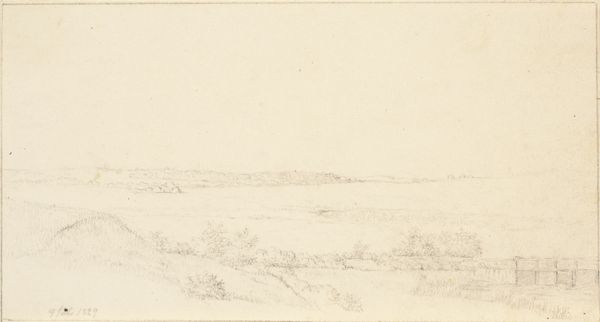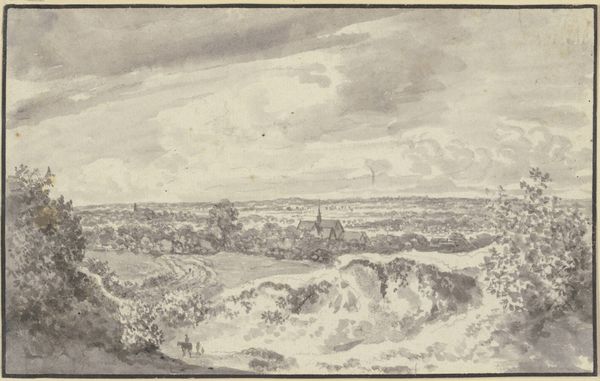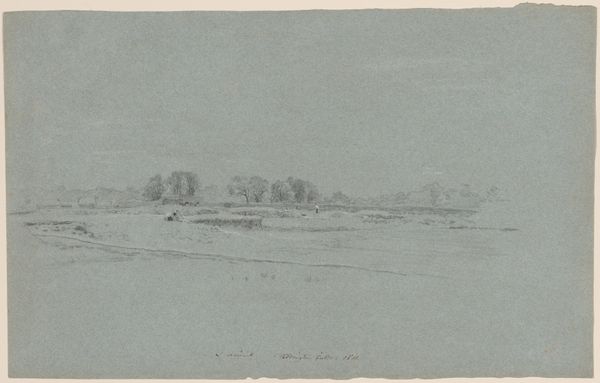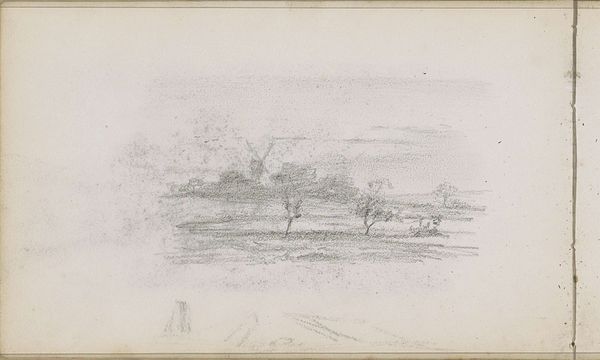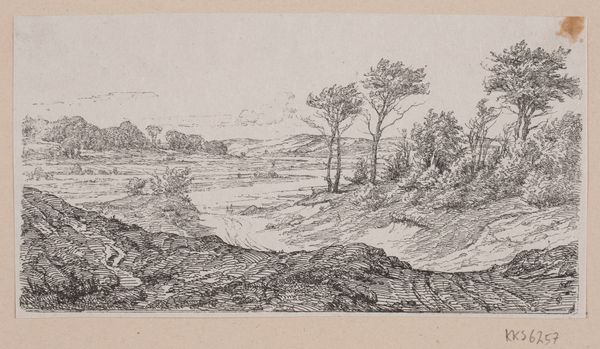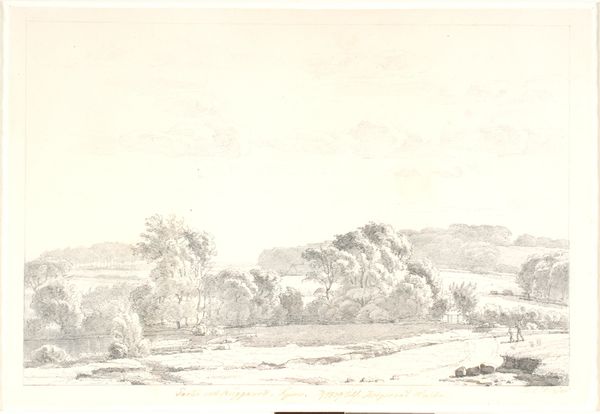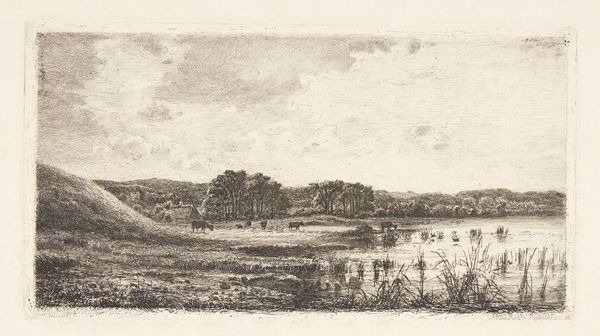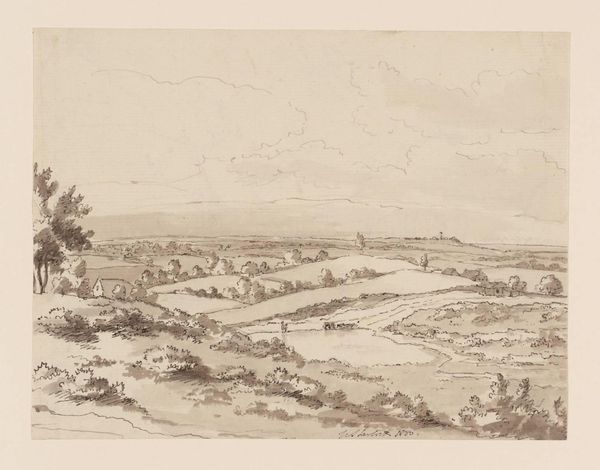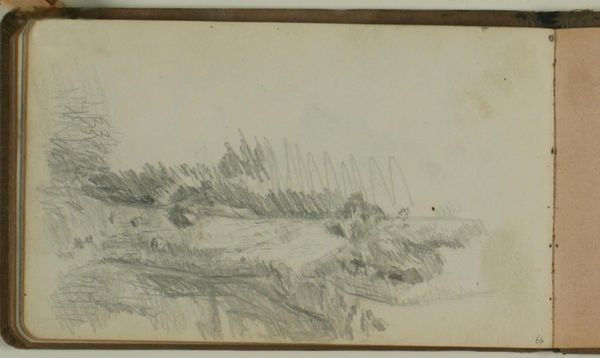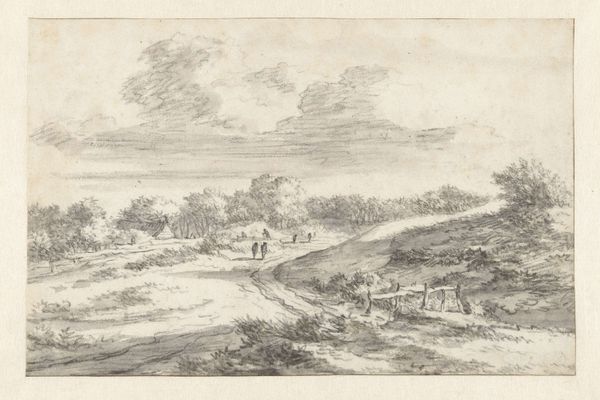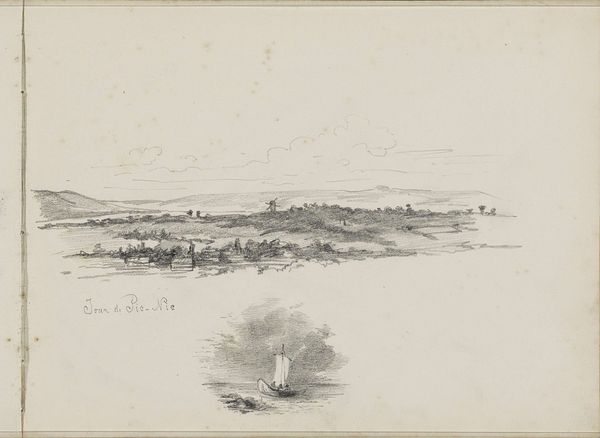
drawing, paper, pencil
#
pencil drawn
#
drawing
#
pencil sketch
#
landscape
#
paper
#
pencil
#
pencil work
#
realism
Copyright: Rijks Museum: Open Domain
Editor: This drawing, titled "Vlak landschap met bomen," or "Flat landscape with trees," is by Maria Vos and was made sometime between 1834 and 1906. It's a pencil drawing on paper and evokes such a feeling of quiet contemplation. The sketch is so simple, almost sparse. How do you interpret this work within its historical context? Curator: That's a keen observation. This piece really speaks to the 19th-century shift toward Realism. We see artists moving away from romanticized depictions of nature toward a more direct engagement with their immediate environment. Vos's choice of a "flat landscape" devoid of dramatic features might reflect a democratic impulse, focusing on the everyday rather than the sublime. Think about the rise of landscape painting at this time, how it reflects ideas about national identity and connection to the land. Does it remind you of other art from that period? Editor: I see the connection to Realism, but the lack of detail almost feels… incomplete? Was it common for artists to display works that appear unfinished? Curator: That’s interesting, because its "unfinished" quality challenges established notions of artistic polish valued by the Academy. This more informal style was partly fueled by the rise of plein air painting and a desire to capture fleeting moments of observation, outside of a studio. In this context, could we say the sketch serves a preparatory function for other artistic expressions, and perhaps represents a different value than that expected from ‘high art’? What do you make of its presence in a museum collection? Editor: That is a really thought provoking take, this would really shift its potential intent and significance! I suppose the museum displaying it elevates a preparatory sketch into a work of art itself, highlighting a specific artistic choice. I definitely appreciate the work a lot more after understanding the sociopolitical trends happening during its creation. Curator: Exactly. It shows us how our understanding of art is always mediated by the institutions that display it and the values they represent.
Comments
No comments
Be the first to comment and join the conversation on the ultimate creative platform.
